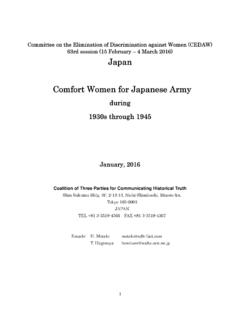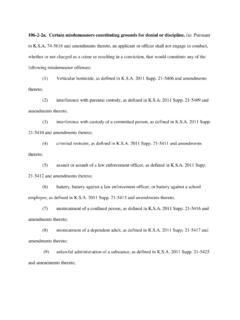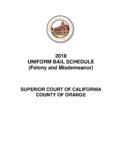Transcription of UNITED STATES OFFICE OF WAR INFORMATION Psychological ...
1 UNITED STATES OFFICE OF WAR INFORMATION Psychological warfare Team Attached to Army Forces India-Burma Theater Japanese Prisoner of War Interrogation Report No. 49 This official US record made by direct interrogation of comfort women captured on the battlefield is one of the most important source materials related to documenting the real comfort women. In 1944, the UNITED STATES Army captured some Comfort Women in Burma and were interrogated by the Army. The Army filed Report Number 49 and it stated that the ladies were well-paid prostitutes. It clearly defined a "comfort girl" as nothing more than a prostitute or "professional camp follower.
2 " (Preface) It also stated that their average month net pay was 750 Yen, which was 75 times higher than that of a private first class soldier s pay of 10 Yen. (Pay and Living Condition) These show that the comfort women were merely very highly paid prostitutes, and having absolutely nothing to do with sexual slavery. Photo copy of the original report: Typed copy of the above Photo copy of the original report: Typed copy of the above: UNITED STATES OFFICE OF WAR INFORMATION Psychological warfare Team Attached to Army Forces India-Burma Theater APO 689 Japanese Prisoner Place interrogated: Ledo Stockade of War Interrogation Date interrogated: Aug.
3 20 - Sept. 10, 1944 Report No. 49. Date of Report: October 1, 1944 By: T/3 Alex Yorichi _____ Prisoners : 20 Korean Comfort Girls Date of Capture : August 10, 1944 Date of Arrival : August 15, 1994 at Stockade _____ PREFACE; This report is based on the INFORMATION obtained from the interrogation of twenty Korean "comfort girls" and two Japanese civilians captured around the tenth of August, 1944 in the mopping up operations after the fall of Myitkyina in Burma. The report shows how the Japanese recruited these Korean "comfort girls", the conditions under which they lived and worked, their relations with and reaction to the Japanese soldier, and their understanding of the military situation.
4 A "comfort girl" is nothing more than a prostitute or "professional camp follower" attached to the Japanese Army for the benefit of the soldiers. The word "comfort girl" is peculiar to the Japanese. Other reports show the "comfort girls" have been found wherever it was necessary for the Japanese Army to fight. This report however deals only with the Korean "comfort girls" recruited by the Japanese and attached to their Army in Burma. The Japanese are reported to have shipped some 703 of these girls to Burma in 1942. RECRUITING; Early in May of 1942 Japanese agents arrived in Korea for the purpose of enlisting Korean girls for "comfort service" in newly conquered Japanese territories in Southeast Asia.
5 The nature of this "service" was not specified but it was assumed to be work connected with visiting the wounded in hospitals, rolling bandages, and generally making the soldiers happy. The inducement used by these agents was plenty of money, an opportunity to pay off the family debts, easy work, and the prospect of a new life in a new land, Singapore. On the basis of these false representations many girls enlisted for overseas duty and were rewarded with an advance of a few hundred yen. The majority of the girls were ignorant and uneducated, although a few had been connected with "oldest profession on earth" before.
6 The contract they signed bound them to Army regulations and to work for the "house master" for a period of from six months to a year depending on the family debt for which they were advanced. Approximately 800 of these girls were recruited in this manner and they landed with their Japanese "house master" at Rangoon around August 20th, 1942. They came in groups of from eight to twenty-two. From here they were distributed to various parts of Burma, usually to fair sized towns near Japanese Army camps. Eventually four of these units reached the Myitkyina vicinity. They were, Kyoei, Kinsui, Bakushinro, and Momoya.
7 The Kyoei house was called the "Maruyama Club", but was changed when the girls reached Myitkyina as Col. Maruyama, commander of the garrison at Myitkyina, objected to the similarity to his name. PERSONALITY; The interrogations show the average Korean "comfort girl" to be about twenty five years old, uneducated, childish, whimsical and selfish. She is not pretty either by Japanese of Caucasian standards. She is inclined to be egotistical and likes to talk about herself. Her attitude in front of strangers is quiet and demure, but she "knows the wiles of a woman." She claims to dislike her "profession" and would rather not talk either about it or her family.
8 Because of the kind treatment she received as a prisoner from American soldiers at Myitkyina and Ledo, she feels that they are more emotional than Japanese soldiers. She is afraid of Chinese and Indian troops. LIVING AND WORKING CONDITIONS; In Myitkyina the girls were usually quartered in a large two story house (usually a school building) with a separate room for each girl. There each girl lived, slept, and transacted business. In Myitkyina their food was prepared by and purchased from the "house master" as they received no regular ration from the Japanese Army.
9 They lived in near-luxury in Burma in comparison to other places. This was especially true of their second year in Burma. They lived well because their food and material was not heavily rationed and they had plenty of money with which to purchase desired articles. They were able to buy cloth, shoes, cigarettes, and cosmetics to supplement the many gifts given to them by soldiers who had received "comfort bags" from home. While in Burma they amused themselves by participating in sports events with both officers and men; and attended picnics, entertainments, and social dinners.
10 They had a phono-graph; and in the towns they were allowed to go shopping. PRICE SYSTEM; The conditions under which they transacted business were regulated by the Army, and in congested areas regulations were strictly enforced. The Army found it necessary in congested areas to install a system of prices, priorities, and schedules for the various units operating in a particular areas. According to interrogations the average system was as follows; 1. Soldiers 10 AM to 5 PM yen 20 to 30 minutes 2. NCOs 5 PM to 9 PM yen 30 to 40 minutes 3.










